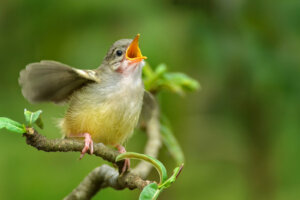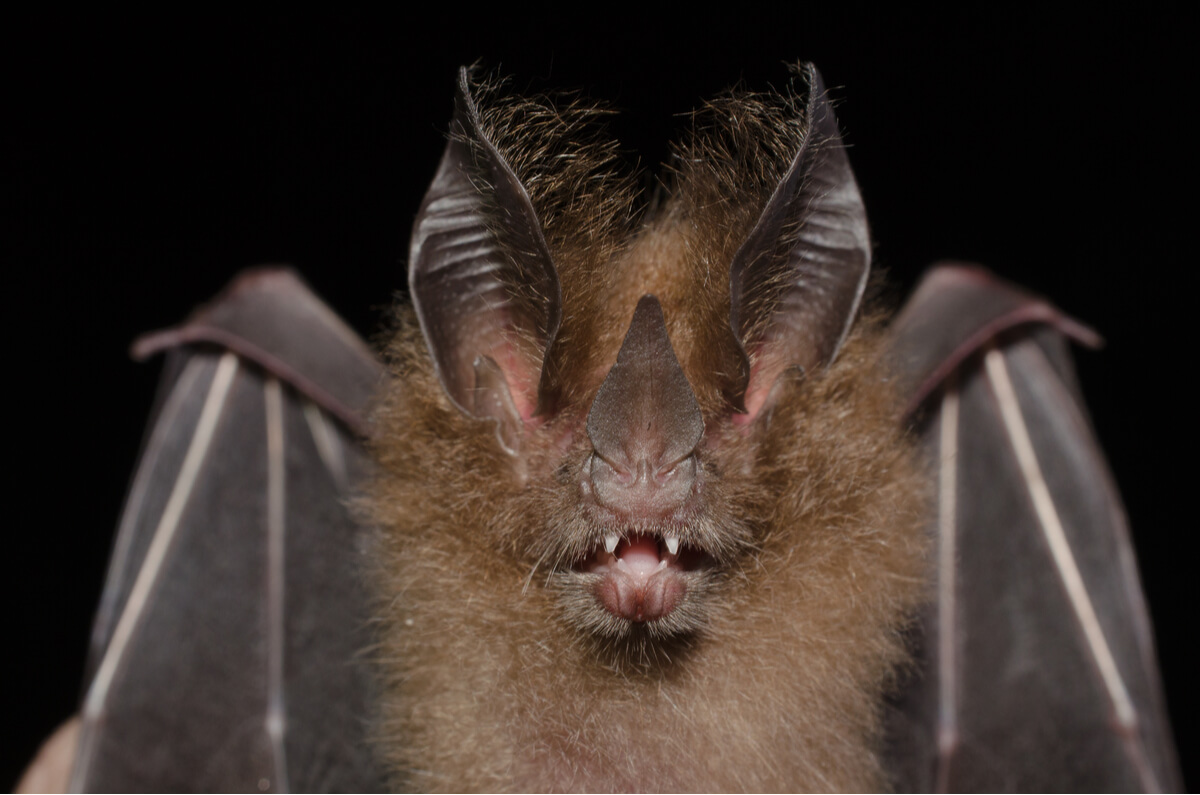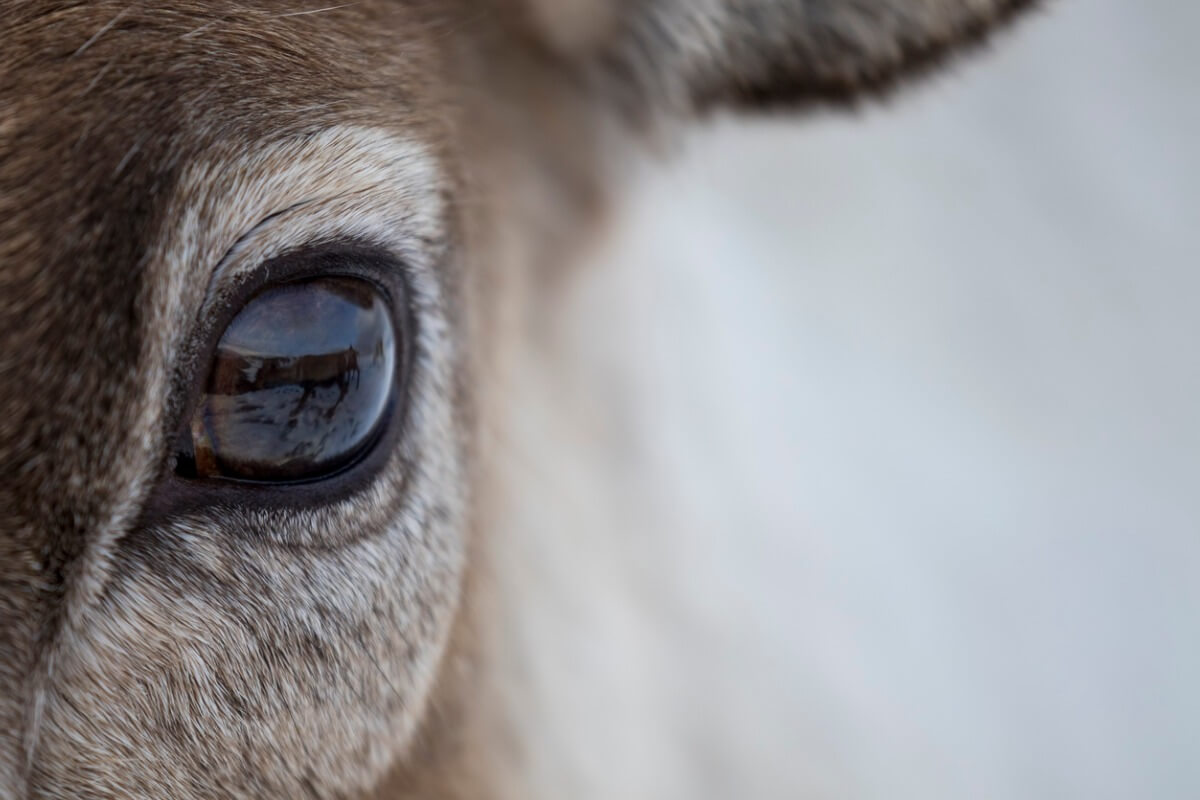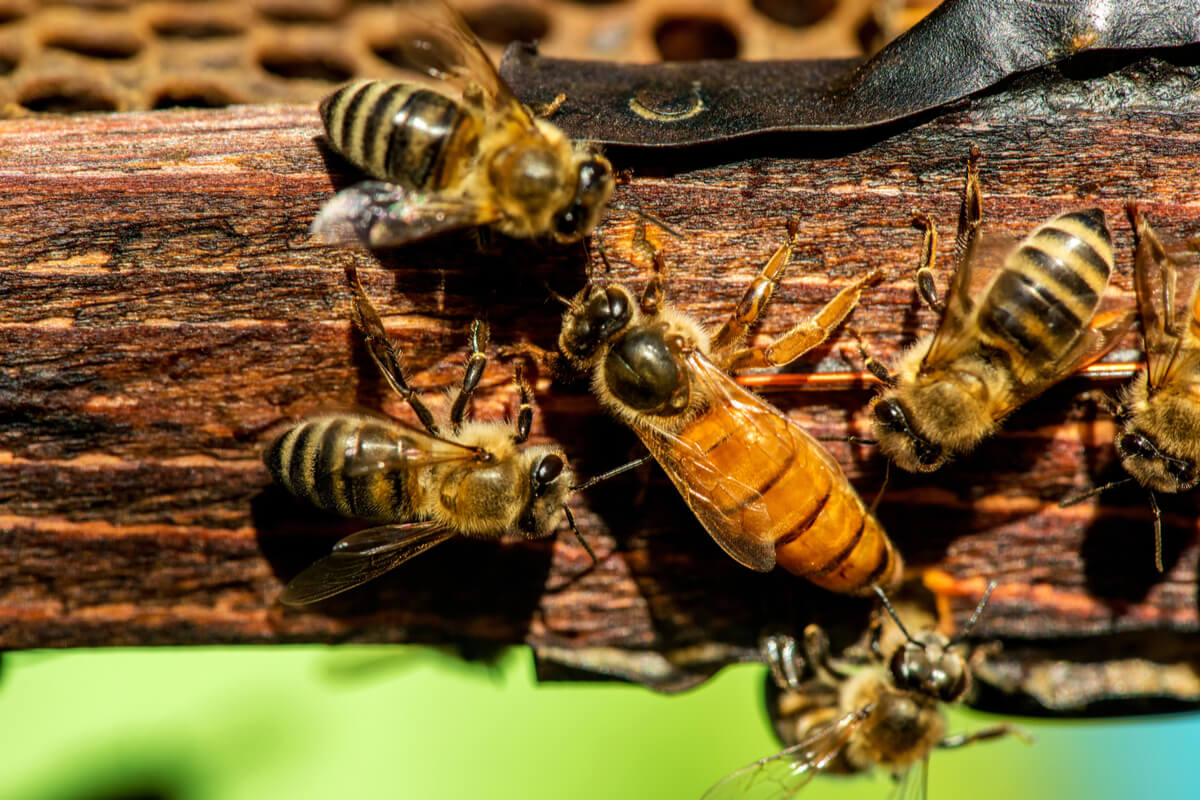4 Types of Communication Between Animals

Humans, so tied to verbal language, sometimes fail to understand communication between animals. However, their world is as complex and diverse as ours when it comes to transmitting messages.
In the following lines, we bring you a review of the different forms of communication that animals use to understand each other. You’ll be surprised by everything that they can communicate without words.
Types of communication between animals
It isn’t only necessary to take into account the ability to articulate a spoken language when analyzing communication between animals. Each species processes the stimuli of the environment in its own way, so that its messages are adapted to the sensory diversity of all its receptors.
Zoosemiotics is the name given to the set of signals that animals use to communicate. These signals, which can be directed at your own species or others, are many and equally interesting.
1. Chemical communication
Chemical communication occurs through pheromones, which are chemical substances released into the environment by volatility and whose objective is to activate a physiological response in another individual. Being an ancient mechanism – phylogenetically speaking – it’s related to very basic processes, such as mating.
However, some species use chemical communication in an interesting way. This is the case with ants, which deposit traces of pheromones behind them to guide their companions towards food sources. They also communicate their social status in the colony through these substances.
Pheromones are present in bodily fluids, such as sweat or urine. Many animals communicate through them, such as dogs.

2. Auditory communication
Communication through sounds is one of those that most connect with human beings. Auditory messages have the advantage of not needing visual or tactile contact and are useful for a multitude of species when it comes to marking territory, looking for a mate, or warning of predators.
Birds are the clearest example of auditory communication, but there are other very interesting forms, such as the use of ultrasound in cetaceans. Sound waves don’t only travel through the air, such as ultrasonic sonars in bats or infrasound in the case of elephants.

3. Communication between animals by visual means
Sight is essential for the survival of many species and not just for looking for food or seeing the predator approach. Visual cues can range from specific body postures to aposematic color, which indicates that it isn’t a good idea to eat an arrow frog, for example.
Color changes are also interesting signs: it can be voluntary, as with some squid which camouflage themselves, or it can be linked to changes in the body.
For the latter, a good example is found in female baboons (genus Papio), whose reproductive organs turn bright red in their fertile stage.

4. Tactile signals
Tactile signals are quite common in insects. Bees use tactile signals within the darkness of the hive in their famous dance to indicate the position of the food.

As you can see, it’s possible to communicate in a rich and effective way without using words. In fact, the communicative complexity of some species, such as the dolphin, calls into question human exclusivity when it comes to calling the signals we emit a language. Although many of them don’t speak, to understand animals you only need to know which sense to use.
Humans, so tied to verbal language, sometimes fail to understand communication between animals. However, their world is as complex and diverse as ours when it comes to transmitting messages.
In the following lines, we bring you a review of the different forms of communication that animals use to understand each other. You’ll be surprised by everything that they can communicate without words.
Types of communication between animals
It isn’t only necessary to take into account the ability to articulate a spoken language when analyzing communication between animals. Each species processes the stimuli of the environment in its own way, so that its messages are adapted to the sensory diversity of all its receptors.
Zoosemiotics is the name given to the set of signals that animals use to communicate. These signals, which can be directed at your own species or others, are many and equally interesting.
1. Chemical communication
Chemical communication occurs through pheromones, which are chemical substances released into the environment by volatility and whose objective is to activate a physiological response in another individual. Being an ancient mechanism – phylogenetically speaking – it’s related to very basic processes, such as mating.
However, some species use chemical communication in an interesting way. This is the case with ants, which deposit traces of pheromones behind them to guide their companions towards food sources. They also communicate their social status in the colony through these substances.
Pheromones are present in bodily fluids, such as sweat or urine. Many animals communicate through them, such as dogs.

2. Auditory communication
Communication through sounds is one of those that most connect with human beings. Auditory messages have the advantage of not needing visual or tactile contact and are useful for a multitude of species when it comes to marking territory, looking for a mate, or warning of predators.
Birds are the clearest example of auditory communication, but there are other very interesting forms, such as the use of ultrasound in cetaceans. Sound waves don’t only travel through the air, such as ultrasonic sonars in bats or infrasound in the case of elephants.

3. Communication between animals by visual means
Sight is essential for the survival of many species and not just for looking for food or seeing the predator approach. Visual cues can range from specific body postures to aposematic color, which indicates that it isn’t a good idea to eat an arrow frog, for example.
Color changes are also interesting signs: it can be voluntary, as with some squid which camouflage themselves, or it can be linked to changes in the body.
For the latter, a good example is found in female baboons (genus Papio), whose reproductive organs turn bright red in their fertile stage.

4. Tactile signals
Tactile signals are quite common in insects. Bees use tactile signals within the darkness of the hive in their famous dance to indicate the position of the food.

As you can see, it’s possible to communicate in a rich and effective way without using words. In fact, the communicative complexity of some species, such as the dolphin, calls into question human exclusivity when it comes to calling the signals we emit a language. Although many of them don’t speak, to understand animals you only need to know which sense to use.
All cited sources were thoroughly reviewed by our team to ensure their quality, reliability, currency, and validity. The bibliography of this article was considered reliable and of academic or scientific accuracy.
- Kaplan, G (2014). Animal comunication. WIREs Cogn Sci, 5 (6), pp 661–677.
- Comunicación en los animales (artículo). (2016). Khan Academy. https://es.khanacademy.org/science/ap-biology/ecology-ap/responses-to-the-environment/a/animal-communication#:%7E:text=La%20comunicaci%C3%B3n%20generalmente%20es%20entre,participaci%C3%B3n%20de%20feromonas%E2%80%94%20o%20t%C3%A1ctiles.
- Safina, C. (2017). Mentes maravillosas: Lo que piensan y sienten los animales. Galaxia Gutenberg.
- Nelson, M. E. (2011). Electric fish. Current Biology, 21(14), R528-R529.
- Carvajal, V. (2020). Los maestros de la imitación, Cripsis, aposematismo y mimetismo. Departamento de Biología, Escuela Politécnica Nacional.
This text is provided for informational purposes only and does not replace consultation with a professional. If in doubt, consult your specialist.








